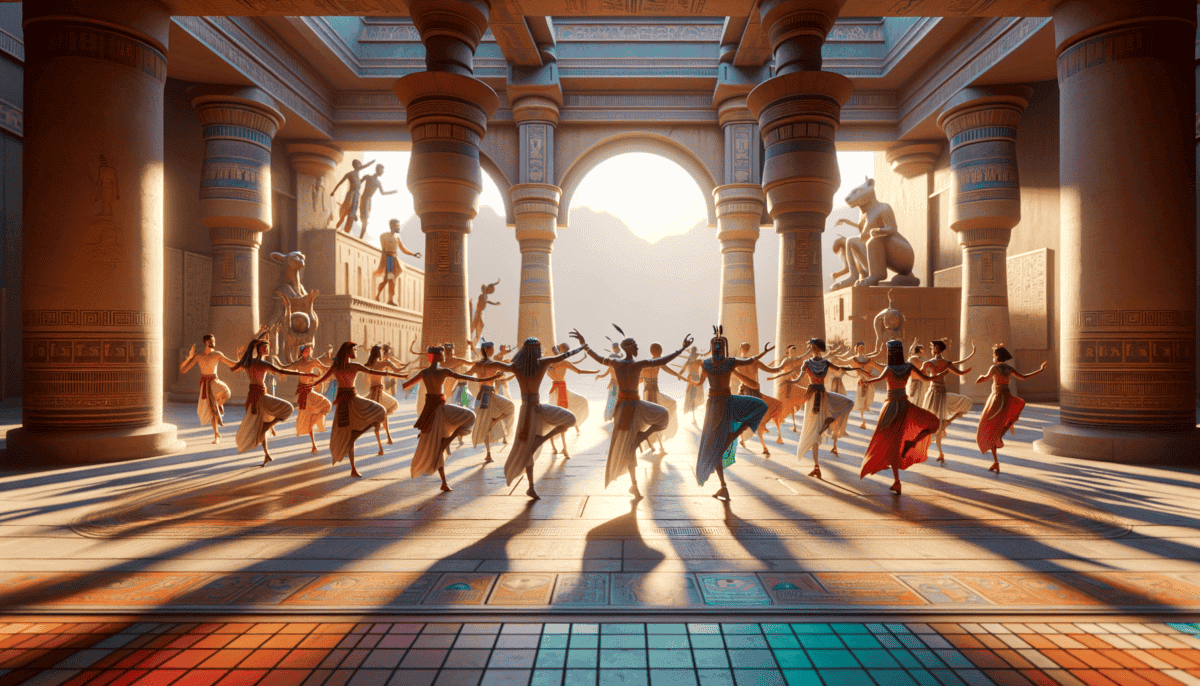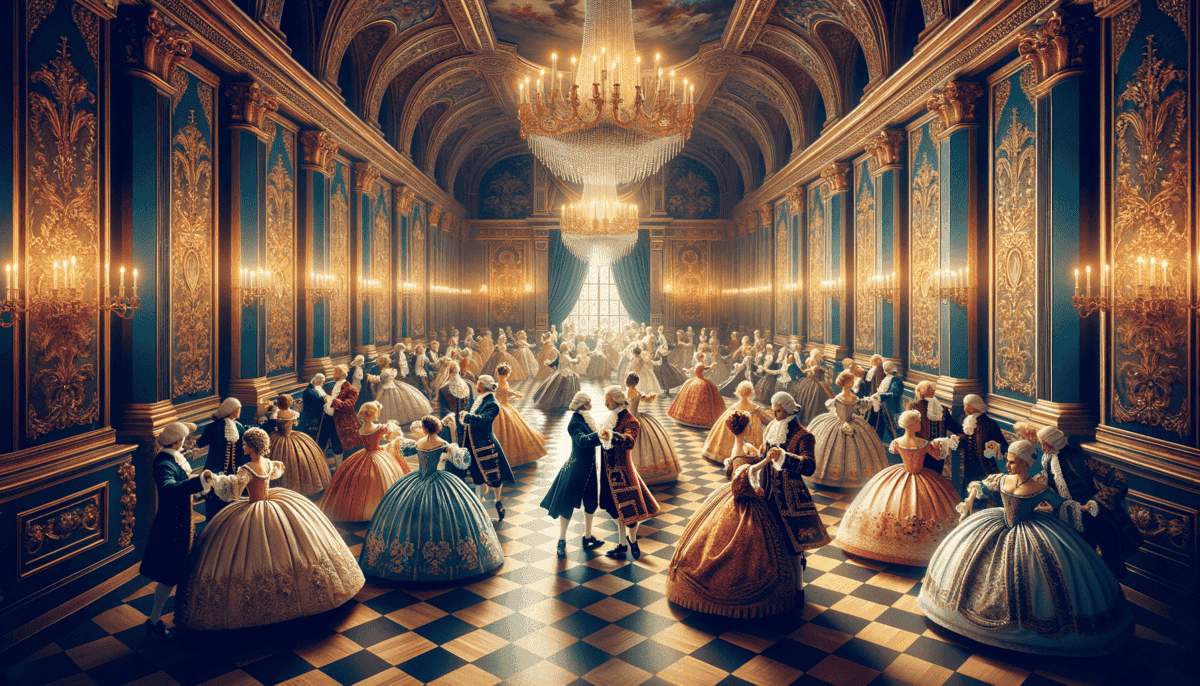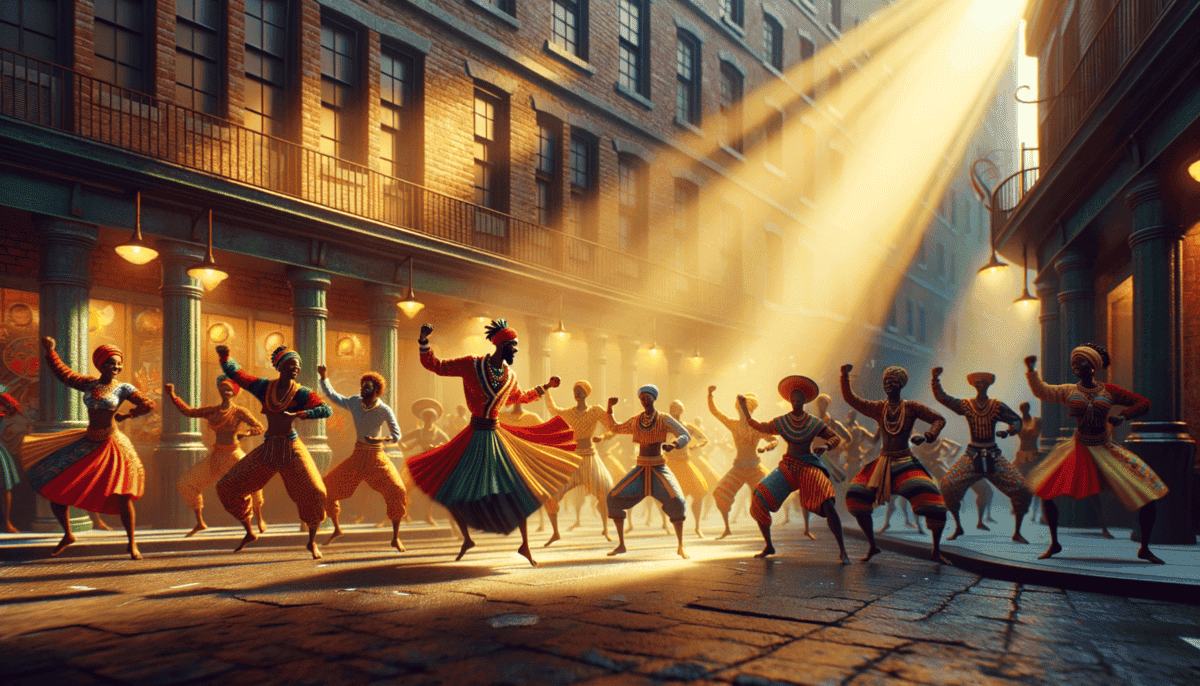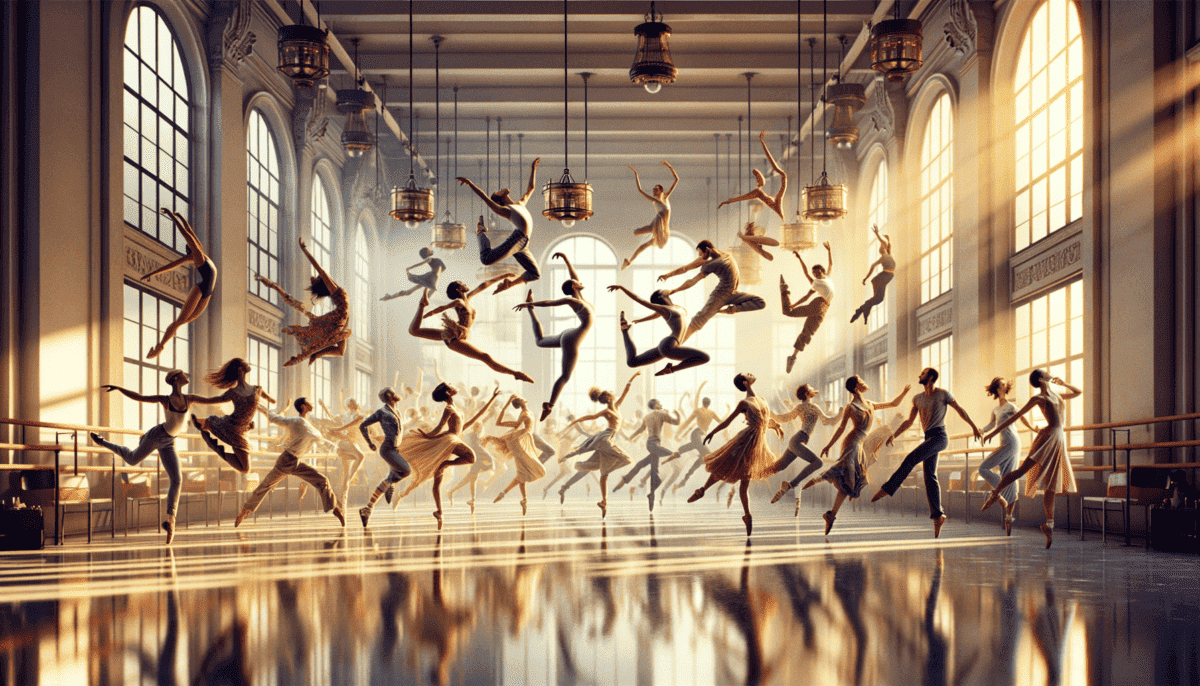Dancing Through Time: A Journey of Movement and Spirit
Long, long ago, before people had words to speak, they had something very special – they could dance! Little Tara and her brother Kai discovered this amazing story during their visit to the Cave of Wonders Museum.
"Look at those paintings on the wall!" Tara pointed excitedly. The cave walls showed people dancing in circles, their arms reaching up to the stars. Some had animal masks on their faces, while others held spears as they moved.
“Why did people dance back then?” Kai asked their guide, Ms. Luna.
Ms. Luna smiled warmly. "Dance was like magic for our ancestors. When they wanted rain for their crops, they danced. When they celebrated a successful hunt, they danced. It was their way of talking without words!"
Tara closed her eyes and imagined the scene. The sound of drums made from hollow logs, boom-boom-boom, filled the air. Feet stamped on the ground in rhythm, creating patterns in the dirt. People moved together, telling stories with their bodies.
"Dance helped people stay together as a group," Ms. Luna explained. "When everyone danced together, they felt like one big family. They shared their happiness, their fears, and their hopes through movement."
The First Dancers
Kai noticed something interesting in one of the paintings. "Some dancers are wearing animal skins!" he exclaimed.
"Yes!" Ms. Luna nodded enthusiastically. "They believed that by dancing like animals, they could become as strong as bears, as fast as deer, and as wise as eagles. These special dances were called ritual dances."
Here are the ways early humans used dance:
• To pray for food and rain
• To celebrate special events
• To prepare for hunting
• To heal sick people
• To welcome new babies
• To remember their ancestors
The Power of Movement
"Dancing wasn't just for fun," Ms. Luna continued. "It was a powerful way to pass down stories and teach young people about their history. Every step, every turn, and every jump had a special meaning."
Tara twirled around the museum floor, pretending to be one of the ancient dancers. "I can feel it!" she said. "It's like my body is telling a story!"
As the sun began to set outside the museum, casting long shadows on the cave walls, Tara and Kai had learned something amazing – dancing wasn't just something people did for fun at parties. It was one of the very first ways humans found to share their feelings, tell their stories, and connect with each other.
"So when I dance at home," Tara realized, "I'm doing something that people have been doing since the beginning of time!"
Ms. Luna beamed. "That's right! Every time you move to music, you're part of a beautiful story that started thousands of years ago."
The ancient paintings on the walls seemed to come alive in the fading light, the dancers frozen in time but still telling their stories through their eternal movements. Tara and Kai couldn't wait to learn more about how dance changed as time went on, and how different people around the world made dance their own special way of speaking without words.
Ancient Steps and Sacred Moves
Tara and Kai couldn’t wait to explore the next room of the museum. Ms. Luna led them into a space filled with colorful pictures of ancient Egypt, Greece, and Rome.
“Wow!” Tara gasped, pointing at a beautiful painting. “Look at those dancers! Their clothes are so pretty!”
Ms. Luna smiled. “In ancient Egypt, dancing was very special. People danced for their gods and pharaohs. Some dancers were as famous as movie stars are today!”
Dancing for the Gods
“Did all ancient people dance the same way?” Kai asked, studying a Greek vase with dancers painted on it.
“Each civilization had its own special dances,” Ms. Luna explained. “The Greeks loved to dance in circles, holding hands. They thought it made the gods happy!”
Here’s how different ancient people used dance:
• Egyptians danced at temples and parties
• Greeks danced to tell stories about their heroes
• Romans danced at big celebrations
• Chinese dancers performed for their emperors
• Indian dancers told stories about their gods
Stories in Motion
Tara tried copying the poses she saw in the pictures. Her arms moved like waves, just like the Egyptian dancers. “It feels like I’m telling a story!” she said excitedly.
The children learned that in ancient times, dancers would:
✨ Wear special costumes
✨ Use masks to become different characters
✨ Move to music made by drums and flutes
✨ Dance during important festivals
Dancing Through Life
“Dancing wasn’t just for special times,” Ms. Luna continued. “People danced when they were happy, when they were sad, and even when they worked!”
Kai watched a video of modern dancers performing ancient moves. “It’s like they’re reaching through time,” he whispered.
Ms. Luna showed them pictures of dancers drawn on pottery. “These ancient people left us clues about their dances. It’s like they wanted us to remember their special moves forever!”
“But why did they write their dances down?” Tara asked, trying to copy a pose from a Greek statue.
“Because dance was their way of keeping their stories alive,” Ms. Luna explained. “Just like we take pictures today, they drew their dances so people would never forget them.”
The children spent the rest of the afternoon pretending to be ancient dancers. They moved like Egyptian priests, jumped like Greek warriors, and spun like Roman performers. Each movement told a different story, just like thousands of years ago.
As they got ready to learn about the next part of dance history, Kai smiled. “It’s amazing how people from so long ago loved to dance just like we do!”
The ancient dance pictures seemed to twinkle in the museum lights, holding secrets of movements that had been passed down through thousands of years. Tomorrow would bring new dances and new stories, but for now, Tara and Kai were happy imagining themselves dancing in the ancient world.
Royal Steps and Fancy Moves
Tara and Kai walked into a grand room filled with mirrors and sparkly chandeliers. Their eyes grew wide at the sight of beautiful dresses and fancy suits on display.
“Welcome to the Royal Ballroom!” Ms. Luna announced with a twirl. “This is where we learn about dancing in castles and palaces.”
Dance Like Royalty
“Dancing was super important if you lived in a castle,” Ms. Luna explained. “It was like knowing how to use a phone today – everyone had to learn!”
Tara spotted a painting of people dancing in fancy clothes. “Look at their pretty dresses! They’re so puffy!”
“Those are called ball gowns,” Ms. Luna said. “Ladies would spend hours getting ready for a dance party, called a ball.”
Special Dance Rules
Here are some fun rules dancers had to follow at royal balls:
• Bow or curtsy before dancing
• Hold hands with white gloves on
• Move in perfect circles around the room
• Never step on anyone’s toes
• Remember all the special steps
Kai tried to bow like in the pictures. “Was this how they said hello?”
Famous Palace Dances
Ms. Luna showed them some popular royal dances:
The Minuet – tiny, careful steps
The Waltz – spinning in circles
The Gavotte – jumping and hopping
The Pavane – walking very slowly
“Can we try the Waltz?” Tara asked excitedly.
Ms. Luna helped them hold their arms up properly. “One-two-three, one-two-three,” she counted as they spun around.
Dancing Through Europe
“These dances traveled all over Europe,” Ms. Luna explained. “From France to England, everyone wanted to dance like royalty!”
The children watched a video of modern dancers performing old royal dances. The dancers moved so smoothly, like they were floating on air.
Tara practiced her curtsy while Kai tried another bow. “It’s like being in a fairy tale!” Tara giggled.
They spent the afternoon learning simple royal dance steps. Even though the moves were hundreds of years old, they were still fun to do!
As the sun started to set outside the museum windows, the chandeliers sparkled even brighter. Tara and Kai could almost imagine being at a real royal ball, dancing the night away in a beautiful palace.
The royal ballroom held more dance secrets to discover, but it was time to rest their dancing feet. Tomorrow would bring new moves and more exciting dance stories to learn.
Freedom Through Movement
Ms. Luna led Tara and Kai into a room filled with bright colors and the sound of drums. The walls showed pictures of people dancing with so much joy and energy!
“Today we’re learning about how dance helped people stay strong during hard times,” Ms. Luna said softly.
Dancing to Remember Home
“When people couldn’t speak their own language,” Ms. Luna explained, “they used dance to tell stories and keep their culture alive.”
Kai watched a video of the Ring Shout dance. “Look how they move in a circle!” he said.
“The circle was very important,” Ms. Luna nodded. “It meant everyone was connected, like a family.” ⭕
Special Dance Moves
These dances had special moves that meant different things:
• Stomping feet – connecting with the earth
• Clapping hands – making music when drums weren’t allowed
• Moving in circles – bringing people together
• Swaying arms – flying free like birds
• Jumping high – reaching for hope
“Can we try some moves?” Tara asked eagerly.
New Dances Are Born
Ms. Luna showed them how old African dances grew into new styles:
Tap Dancing – making music with your feet
Jazz Dance – moving freely and with feeling
Lindy Hop – jumping and swinging with a partner
Break Dancing – spinning and moving in amazing ways
Dance Brings People Together
“These dances didn’t just stay in one place,” Ms. Luna explained. “They spread everywhere and brought people together!”
They watched videos of the Savoy Ballroom, where people of all backgrounds danced together in the 1930s. Everyone looked so happy!
Tara and Kai practiced some jazz steps. “It feels different from the royal dances,” Kai noticed.
“That’s right!” Ms. Luna said. “These moves come from the heart. They’re about feeling free to be yourself.”
As they moved around the room, the drumbeats seemed to make their feet move by themselves. The children felt the same joy that dancers had felt for hundreds of years.
The sun was setting outside, painting the room in warm colors. But there were still more dance stories to discover, more moves to learn, and more joy to share through movement.
Dancing Into the Future
The morning sun streamed through the dance studio windows as Tara and Kai bounced in excitedly. Today was special – they would learn about all the amazing new ways people dance!
Ballet Takes Flight
“Look at how the dancer floats!” Tara gasped, watching a video of a ballerina spinning through the air.
Ms. Luna smiled. “Ballet shows us that our bodies can do magical things. Want to try a simple position?”
The children stood tall, pointing their toes like little birds about to take flight.
Street Moves and Cool Grooves
“But dancing isn’t just about tutus and toe shoes,” Ms. Luna explained. “Some of the most exciting dances started right on the streets!”
• Hip Hop – popping and locking moves
• Breakdancing – spinning on the ground
• Freestyle – making up your own cool steps
• Urban Dance – mixing different styles together
• Street Jazz – adding funk to classic moves
Dancing Around the World
“Today, we can learn dances from everywhere!” Ms. Luna said, pulling up videos on her tablet.
“Wow! Is that K-pop?” Kai asked, watching dancers move in perfect sync.
They saw people dancing:
Bollywood style from India
Salsa from Latin America
Pop dances from Korea
Traditional moves from Africa
Dance Goes Digital
“Remember those TikTok dances everyone does?” Ms. Luna asked. The children nodded eagerly.
“That’s right! Now dance moves can travel around the world in seconds. Anyone can learn and share dances!”
Moving Together
Ms. Luna put on some music with a happy beat. “Let’s try mixing different styles!”
“That’s perfect!” Ms. Luna clapped. “Modern dance is all about making it your own!”
The room filled with giggles as they tried mixing:
✨ Twirls with robot moves
✨ Jazz hands with break dance steps
✨ Ballet jumps with street style attitude
As they danced, Ms. Luna explained how dance keeps changing and growing. New styles pop up all the time, and old ones get fresh new twists.
The children moved freely, creating their own special dances. They were part of dance history too – helping to shape what dance would become tomorrow.
Outside, the city hummed with energy, full of people finding new ways to move and express themselves through dance.
Moving as One World
The sun set on another magical day at the dance studio. Tara and Kai sat in a circle with their friends, eyes sparkling with excitement.
Dancing Together
“Today, we’re going to do something special,” Ms. Luna announced. “We’re going to join a global dance party!”
Screens lit up around the room. Smiling faces appeared from:
Japan
Brazil
Kenya
India
Australia
Digital Dance Magic
“Hi friends!” Tara waved at the screens. Children from different countries waved back.
“Even though we’re far apart, dance brings us close together!” Ms. Luna said with a bright smile.
⭐ Japanese children showed cool robot moves
⭐ Brazilian kids taught samba steps
⭐ Kenyan dancers shared traditional jumps
⭐ Indian children demonstrated Bollywood twirls
⭐ Australian kids mixed aboriginal and modern moves
Creating Something New
“Now,” Ms. Luna said, “let’s make a dance together!”
They called it the “World Dance.” It had:
• Spins from ballet
• Moves from hip hop
• Steps from folk dances
• Jumps from street dance
• Waves from K-pop
The Future of Dance
“Dance will keep growing and changing,” Ms. Luna explained. “Just like you do!”
“Of course! That’s what makes dance so special. It never stops moving forward!”
One Big Dance Family
As the video call ended, everyone felt happy and connected. They had learned that:
Everyone can add something special
Moving together makes us smile
New dances are born every day
Ms. Luna gathered the children close. “Remember, from caves to castles, from streets to screens, people have always danced. And they always will!”
Tara and Kai hugged their friends goodbye. They knew that wherever they went in life, they could always find someone to dance with. Because dance is the language that everyone speaks with their heart.
As they left the studio that day, their feet still moving to the music in their heads, they understood that they weren’t just learning about dance history – they were part of it. And the next chapter would be written by them, one step at a time.






